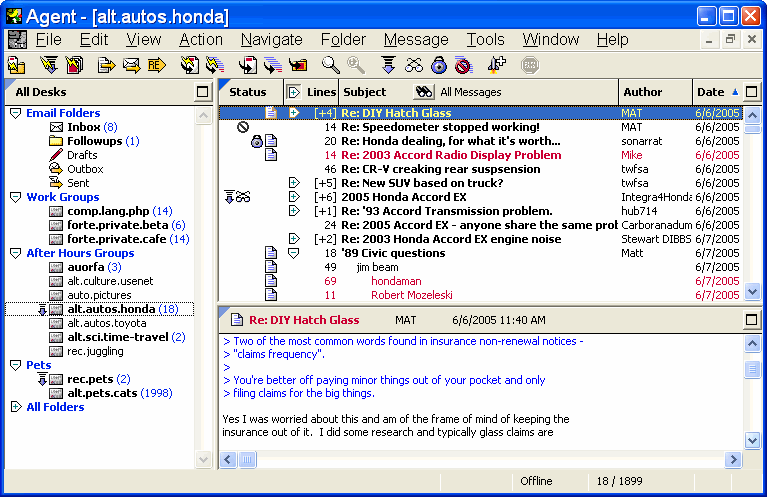In the early days of the Internet, before the Web was invented, there were many ways of distributing information across the net. One of the most successful was Usenet News. Usenet is best thought of as a set of public discussion groups, which you can access at any time and which is constantly being updated. Access to Usenet requires yet another type of client, called a Newsreader, that reads yet another protocol, NNTP or Network News Transport Protocol. This allows you to select which newsgroups you'd like to read, and will download the headers for those groups. You can then select individual articles to read. A typical newsreader is shown in Figure 3.2, “A typical newsreader (screenshot)”.
Usenet has largely been replaced by web-based discussion groups and chat tools such as ICQ and IRC (more later on these), though many newsgroups remain active. A typical news server will still carry upwards of 20,000 groups. The news service provided on campus is limited since supplying a full news service needs large amounts of disk space, so you may find the range of groups restricted if you install your own client.
The nature of Usenet news, in particular the ease with which you can post relatively anonymous articles, has meant that many newsgroups have been used to carry some “interesting” material — for example, many of the “alt.binaries” groups are used to distribute pirated music and software, cracks and pornography — so, caveat lector!
Figure 3.2. A typical newsreader (screenshot)

Source: http://www.forteinc.com/agent/index.php [accessed 20
October 2006].